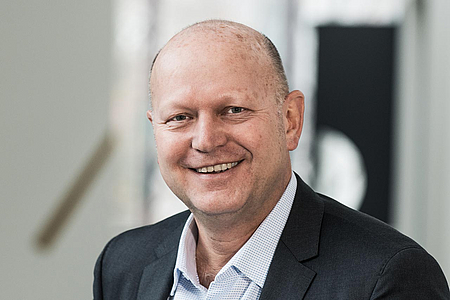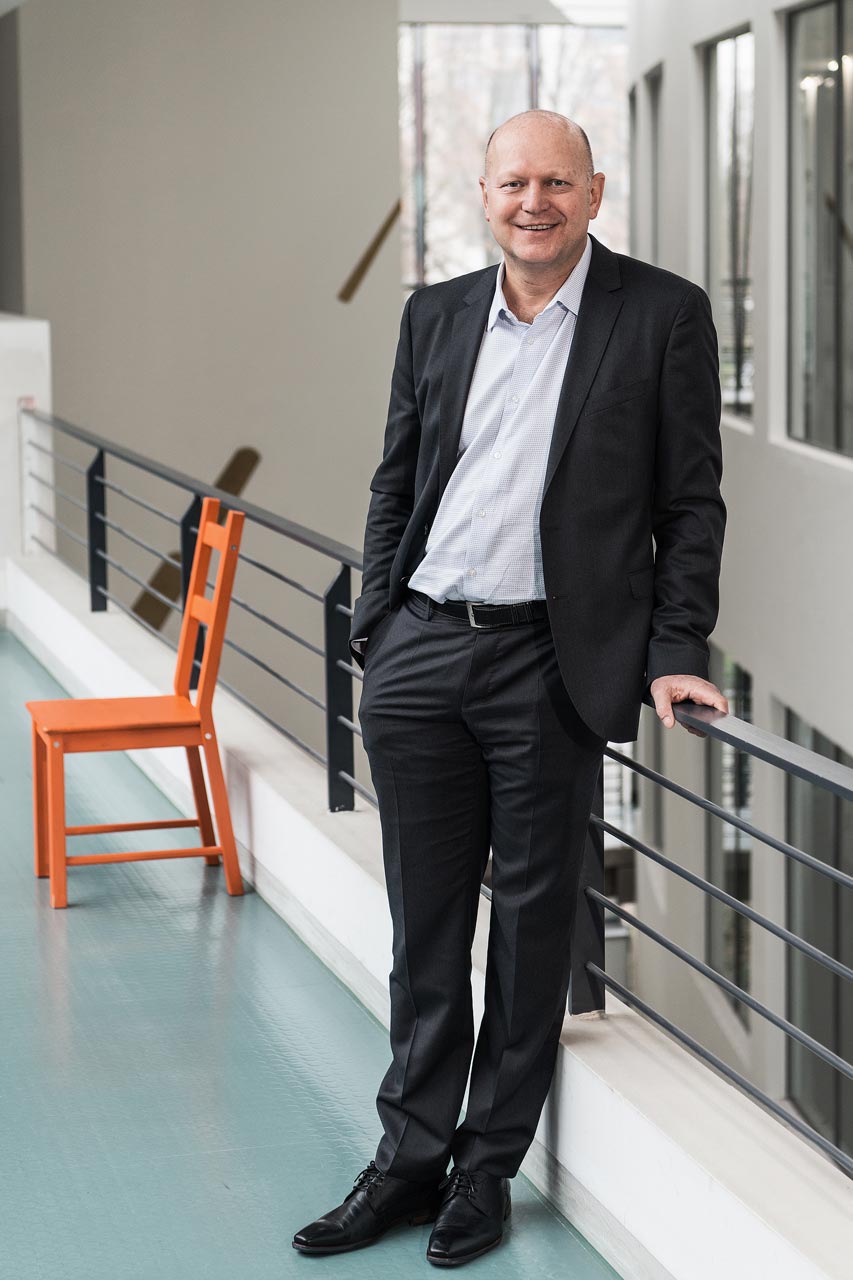A new chapter in transplant surgery
Stefan G. Tullius is the head of Transplant Surgery at the Brigham and Women's Hospital of Harvard Medical School, where he simultaneously holds the Chair for Surgery named after Joseph E. Murray. Professor Murray carried out the first successful organ transplant in 1954, for which he received the Nobel Prize. As Einstein BIH Visiting Fellow Stefan G. Tullius has been regularly coming to Berlin since 2017 to develop a transplant program for uterus, hand and abdominal wall transplants at the Charité. During one of his stays here, we met him at the Charité.
Professor Tullius, you work both at the clinic and in research. What is it that you like about that combination?
Combining the clinic and science enables me to identify clinical problems and to bring them to the lab to find explanations there. I can directly apply the resulting improvements in therapy – and I find that interconnectedness exciting. The procedure in transplant surgery has a unique feature: the aim is not to achieve healing by ‘cutting out’, but to replace an organ with a transplant. These procedures give patients a new chance of life. At the clinic where I work, the first organ transplants were carried out sixty years ago. We have maintained very close contact with the patients of that time, true pioneers of transplantation, all the way up to the present. It’s great to see how incredibly quickly things have developed since then. The Vascularized Composite Allotransplantation – or VCA – is the latest development in our field and I’m glad to be able to help these procedures to advance.
What exactly is a Vascularized Composite Allograft?
In a VCA, different types of tissue are transplanted as part of an organ system. A good example is the process of transplanting a hand. A hand consists of bones, blood vessels, muscles, tendons and nerves: hence the term “composite tissue”. Unlike heart or kidney transplants, such operations are usually not vital for survival, but do mean a huge improvement in life quality for the patients. A hand is usually transplanted when a patient has lost the dominant hand or even both hands. Unlike prosthetic hands, transplanted hands can not only perform motor but also sensitive functions.
Thus, a completely new transplant field has developed, with exciting indication and treatment options.
You’re now working together with a team at the Charité as an Einstein BIH Visiting Fellow. What’s the focus of that cooperation?
At present, VCAs aren’t performed as frequently as, for example, kidney transplants, but demand is markedly increasing. Certified centers offering these procedures will therefore be established in the future and will attract the patient pool of whole countries and regions. There is no doubt that the Charité has the potential to become one of those centers. In our VCA programs in Boston, I coordinate the patients’ immunosuppression and the scientific appraisal of the procedures and am also working on a clinical procedure for uterine transplantation. In addition to the transplant surgery, I’m also the head of the transplant research lab, with a special focus on transplantation immunology. With that specific expertise, I’m assisting my colleagues at the Charité to develop a composite tissue allotransplantation (CTA) program whose planned focus is to be uterine, hand and abdominal wall transplants.

Funding program
Einstein BIH Visiting Fellows
Funding period
2017 – 2022
Project title
Vascular Composite Tissue Allotransplantation (VCA): An Integrated, Multidisciplinary Basic and Clinical Research Program for Abdominal Wall, Hand, and Uterus Transplantation
Research areas
General and visceral surgery
Institution
Brigham and Women's Hospital, Harvard Medical School, Boston, USA
Since 2015
Joseph E. Murray Chair in Transplant Surgery, Department of Surgery, Brigham and Women’s Hospital/Harvard Medical School, Boston, USA
Since 2013
Professor, Department of Surgery, Harvard Medical School, Boston, USA
2005 – 2013
Associate Professor, Department of Surgery, Harvard Medical School, Boston, USA
Are such transplants a particularly interesting field for researchers in the field of immunology?
More long-term immunosuppression is still a big problem in transplants, and patients often remain in post-treatment for their whole lives, to prevent the transplant being rejected by the body. Abdominal wall transplants are interesting from an immunological viewpoint. They are carried out in the case of patients who, after a liver or intestine transplant, do not have sufficient abdominal wall to close everything off. These patients receive a transplant of part of the donor’s abdominal wall. It is often possible to see, based on changes in the skin of the transplanted abdominal wall, whether, for example, the intestine is being rejected. So, it isn’t necessary to wait for a biopsy; instead, one can quickly control the rejection reaction by increasing immunosuppression. The uterine transplant is interesting and exciting in a number of ways. For one thing, you only need immunosuppression for a limited time – i.e. from the transplant to the delivery of the baby. After the birth, the uterus is removed. Generally, the pregnancy itself provides immunological protection. In the case of a foreign-tissue, transplanted uterus, the immunological mechanisms may be different. The immunological interaction between the mother and fetus during a pregnancy with a uterine transplant is a new field which may also enable us to draw conclusions concerning complications in normal pregnancies.
Why transplant a uterus anyway?
One in 5,000 women is born without a uterus. Other women lose theirs through disease. Up to now, if they wanted to have children, the only option was adoption or a surrogate mother.
In many countries, those procedures are not legal. Uterine transplants aren’t yet very common, but to date there have been over 50 transplants and 13 healthy babies born. Recently, the birth of a healthy baby from a uterus transplanted from a deceased donor was reported. In Sweden, I’ve visited the first infant to be born after a uterine transplant in 2014. It was a wonderful experience to see the mother and child so happy together.
So, something like that will soon be possible at the Charité too?
First, we’re developing a program for basic research, to study immunological phenomena and the formation of new vessels in the case of VCA. Particularly in the field of immunology, there’s a lot to discover. After that, the clinical program is to be implemented in the final phase of the project. It will still take a while until we have a baby who’s come into the world from a transplanted uterus. But the new insights that we gain about the immune system along the way can bring significant advances in the field of Composite Tissue Allotransplantation (CTA).
November 2017 (Update December 2018) / MM
